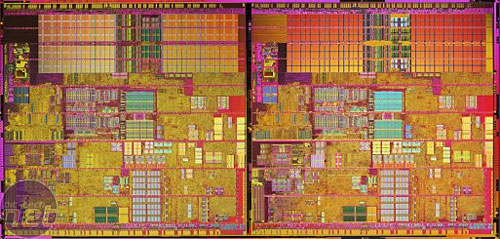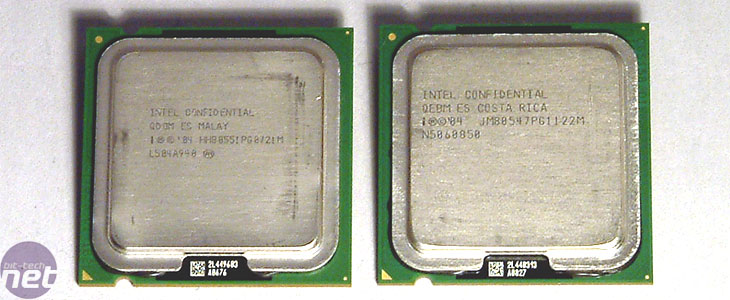Intel Pentium 4 670 & Pentium D 820
August 26, 2005 | 09:47

We have already had a look at AMD's dual-core solution, which is targeted at the higher end of the price spectrum with the highest-end Athlon 64 X2 4800+ costing as much as AMD's flagship FX-57 processor. Back then, we promised you that we'd be having a look at Intel's Pentium D when we had the chance, and today we're going to be looking at Intel's Pentium D 820.
In a nutshell, dual core offers so much more than Intel's original HyperThreading technology that gave many enthusiasts reason to buy Intel's Pentium 4 processors over the faster AMD equivalent. Not to say that AMD's single core processors are particularly slow around the desktop, they just lack one thing - the ability to multi-task to an acceptable level.
 One thing to note with the Pentium D is that only the Extreme Edition supports Intel's HyperThreading technology, the slower cores don't support it and we're likely to see Intel move away from HyperThreading when they bring out their next generation CPU architecture, which was uncovered earlier this week.
One thing to note with the Pentium D is that only the Extreme Edition supports Intel's HyperThreading technology, the slower cores don't support it and we're likely to see Intel move away from HyperThreading when they bring out their next generation CPU architecture, which was uncovered earlier this week.
The Smithfield core also features Intel's recent power management technologies that were included in their recent 600-series single core line up, but interestingly, the Pentium D 820 doesn't have any of these power management features. That means that there is no Enhanced Speedstep, and no TM2 or C1E for power saving because all recent Pentium 4 and Pentium D processors throttle back to 2.8GHz - the default operating speed for the Pentium D 820. There is, however, the inclusion of Intel's EM64T 64-bit extensions and the Execute Disable Bit.
Execute Disable Bit is similar to AMD's Enhanced Virus Protection that was introduced at the same time as Socket 939 and Service Pack 2 for Windows XP. It does exactly the same thing - prevents certain classes of malicious buffer overflow attacks that some virus writers seem to enjoy using.

Pentium D 820 on the left, Pentium 4 670 on the right - spot the difference if you can...
In a nutshell, dual core offers so much more than Intel's original HyperThreading technology that gave many enthusiasts reason to buy Intel's Pentium 4 processors over the faster AMD equivalent. Not to say that AMD's single core processors are particularly slow around the desktop, they just lack one thing - the ability to multi-task to an acceptable level.
Pentium D 820:
The Pentium D 820 is the slowest of Intel's dual core processors, but that should not put you off immediately as it comes with a very healthy price tag. It is based on the Smithfield core, which has the a similar feature set to the Prescott core and comes clocked at 2.8GHz with a 1MB L2 cache for each core - in fact, you could consider the Smithfield core to be two Prescott 1MB cores stuck together on the same die.
The Smithfield core also features Intel's recent power management technologies that were included in their recent 600-series single core line up, but interestingly, the Pentium D 820 doesn't have any of these power management features. That means that there is no Enhanced Speedstep, and no TM2 or C1E for power saving because all recent Pentium 4 and Pentium D processors throttle back to 2.8GHz - the default operating speed for the Pentium D 820. There is, however, the inclusion of Intel's EM64T 64-bit extensions and the Execute Disable Bit.
Execute Disable Bit is similar to AMD's Enhanced Virus Protection that was introduced at the same time as Socket 939 and Service Pack 2 for Windows XP. It does exactly the same thing - prevents certain classes of malicious buffer overflow attacks that some virus writers seem to enjoy using.

Pentium D 820 on the left, Pentium 4 670 on the right - spot the difference if you can...

MSI MPG Velox 100R Chassis Review
October 14 2021 | 15:04





Want to comment? Please log in.